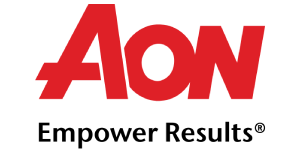This benefit goes a long way in supporting employee physical, mental and financial wellbeing

In delving into the area of top-ups when it comes to maternity and parental leave in Canada, Aon has found that many organizations are unclear on the starting point.
"They have an idea of what a traditional top-up is, but are looking for more information on how it might be structured, what their peers are doing, and how it can be used to address new priorities," says Kelly Higgins, associate vice president of health solutions at Aon.
To that end, Aon took a comprehensive cross-industry look at the state of maternity and parental programs across Canada. Conducted across June and July of this year, the survey featured input from 207 organizations and is the basis of the report Supporting Families at Work: Maternity and Parental Top-up Plans.
Notably, Aon found progression in certain areas — but slowdowns in others.
“We were a bit surprised that there hadn't been any movement on the maternity top-up front. Coverage numbers have not changed since 2017, the last time we collected data on top-up programs,” says Higgins.
There is more movement, however, in the parental leave top-up space, with a 10-per-cent increase between 2017 and 2021, she says.
“Why? Because of social policy set by federal and provincial government. Organizations are addressing gender equity issues across the board and top-ups are one area where equitable benefits can be provided regardless of gender. Employers may be more likely now to create programs that address work-family imbalance issues, support flexibility, support career development unrestricted by family obligation, and so on.”
Defining top-ups
For the purposes of the survey, maternity leave refers to the period of job-protected leave available to a mother for the period immediately before or immediately after the birth of her child. That spans 16 to 19 weeks, depending on the jurisdiction, and the purpose is for both medical recovery and bonding.
Parental leave refers to the job-protected leave available to both mothers (may be taken in addition to maternity leave) and fathers, including same-sex parents, after the birth or adoption of a child. It spans 59 to 77 weeks depending on the jurisdiction and the purpose is for bonding.
“Organizations are addressing gender equity issues across the board and top-ups are one area where equitable benefits can be provided regardless of gender.”
In addition, supplemental unemployment insurance (SUB) plans are frequently referred to as top-up plans, says Higgins.
“Employment insurance (EI) or Quebec Parental Insurance Plan (QPIP) benefits may be available to eligible contributors who are taking a formal unpaid leave of absence from work for various reasons, including maternity and/or parental leave.”
A top-up plan is a formal plan. It does not have to be registered with government authorities, but should be formally documented in the event of an audit. A SUB plan allows an employer to supplement an employee’s EI or QPIP benefit up to 100 per cent of regular weekly earnings without triggering an offset to the employee’s EI/QPIP benefit, she says.
Breaking down the numbers
About half of the employers surveyed by Aon say they have separately defined maternity and parental top-up policies, and half say they have a single top-up policy that provides the same top-up opportunity to all employees.
More than half (58 per cent) of employers provide a maternity leave top-up program. Among these, 31 per cent offer it for six to eight weeks and 55 per cent extend the benefit to between nine and 18 weeks.
Three-quarters (74 per cent) top up regular earnings between 75 per cent to 100 per cent, and 40 per cent top up to 100 per cent.
Just over half make the benefit available to all employees, while 41 per cent restrict the benefit to salaried employees.
Almost two-thirds (63 per cent) say their maternity top-up was designed to align with the medical portion of the maternity/pregnancy leave, though a significant portion of those provide a longer benefit period.
When it comes to parental top-ups, 33 per cent of organizations provide this benefit. Among the 33 per cent, 21 per cent offer it for six to eight weeks while 45 per cent extend it from nine to 18 weeks, and 19 per cent extend it more than 18 weeks.
More than four in five (84 per cent) top up to a percentage of regular earnings of between 75 per cent and 100 per cent. Another 44 per cent make the benefit available to all employees, while 32 per cent restrict the benefit to salaried employees.
Why offer top-ups?
There are a variety of reasons why employers should consider offering top-ups to employees, says Higgins:
Fulfilment of human rights obligations: Employers that have formal short-term disability plans are obligated to provide access to STD benefits during the six- to eight-week medical recovery portion of a maternity leave or provide an equal or greater benefit. Maternity top-ups are frequently designed with this consideration as a first order of business.
Gender equity: While maternity top-ups are typically targeting female employees, many employers are providing parental top-up benefits that match a maternity benefit. This provides supplemental financial support to all employees at the birth or adoption of their child, regardless of gender. Because the maternity and parental leaves and benefits serve different purposes, a woman who has given birth will generally be entitled to both.
Mental and financial wellness: Life transitions such as the birth or adoption of a child and reduced income when taking time off to support a growing family take their toll. A top-up can alleviate some of the financial stress (which in turn could lead to mental or physical stress or illness) that comes with taking time away from work for family responsibility.
Attraction and retention: Programs that support and encourage workers with family support obligations may be important attraction and retention tools for employers that want to be progressive and supportive of work-family overlap. Top-ups may also encourage an attachment to the workforce, making it more likely for a valued employee to return to the workforce following a lengthy leave (in feeling gratitude for support during leave, and recognizing that the organization values employees with family responsibility).
Organizational culture: Programs and policies that support and encourage workers with family support obligations reinforce employer values that respect the family aspirations and work-life challenges of all workers and all families. It promotes the ideal that taking time away from work for family responsibility is not career limiting but rather is promoted and supported through benefits programs such as top-up plans.
Support appreciated
Canadian employers appreciate the changing expectations of their employees when it comes to benefits and organizational policy, says Higgins.
A 2020 survey by Aon found that 40 per cent said that employees now expect “a clear approach to employee family/caregiver responsibilities” and more than 75 per cent expect more flexible hours, work-life balance support, and more agile home/work options.
“The attention being paid to top-ups, especially parental top-ups, speaks to these changing employee expectations and demonstrates that employers are taking them seriously and reviewing their programs accordingly,” she says.
Top-ups are also possible for leaves of absence related to caregiving, such as an employee taking time away to care for a seriously ill family member, says Higgins.
Compassionate care, critical illness of a child or adult family member leaves are supported by the employment insurance program and therefore are top-up eligible, she says, yet only about five per cent of organizations are currently offering top-ups to employees taking these leaves.
“Is this a missed opportunity to support employees taking unpaid (and EI-supported) time off because of family caregiver responsibilities and perhaps continuing to fulfill organizational objectives that demonstrate a committment to their employees' wellbeing?"

Kelly Higgins, assistant vice president of health solutions at Aon
Kelly is responsible for legislative and industry tracking and reporting, content management, and contributes to compliance and trend research in the employee benefits space. She has over 20 years of experience in legal and insurance industry research and has held various roles that have focused on legal, legislative and employee benefits research and reporting, employer surveys and trends reporting, and information management.





